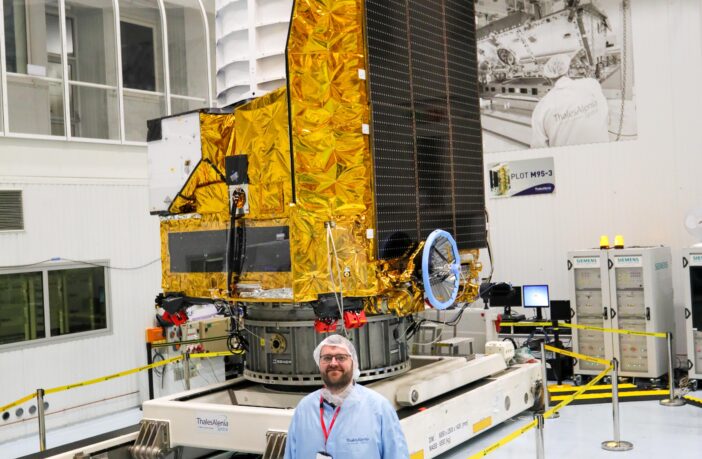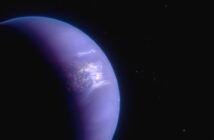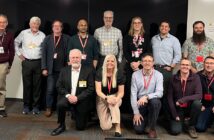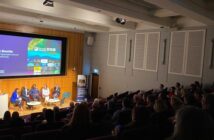The European Space Agency’s (ESA) Euclid flagship Dark Energy Satellite Mission is due to Launch from Cape Canaveral in Florida at 11:11 a.m. EDT (4:11 p.m. BST) on Saturday 1st July 2023, on a SpaceX Falcon 9 rocket.
Euclid’s 6-year mission is to map the dark Universe, using the positions of galaxies and images of dark matter produced from the gravitational lensing distortions of distant galaxies. The galaxy and dark matter maps contain information about the expansion history of the Universe and the evolution of the structure within it. By analysing these maps, astronomers will be able to determine the nature of both dark matter and dark energy. Dark matter, which unlike normal matter does not reflect or emit light, binds together galaxies creating the environment for stars, planets and life, while dark energy is the mysterious new phenomenon which is pushing galaxies away from each other and causing the expansion of the Universe to accelerate.
To achieve this, the Euclid Consortium team will carry out a very precise and accurate analysis of the images and distances of 1.5 billion galaxies over one-third of the sky. Gravitational lensing causes a one part in a hundred change in these galaxy images, which need to be measured from the sample to a precision of one part in a hundred-thousand, presenting a major data-analysis challenge. Euclid will also measure the spectrum of light from over 35 million galaxies to accurately measure their distance from Earth.
To carry this out the Euclid satellite hosts two state-of-the-art instruments, an optical camera (VIS) built in the UK, and a Near-Infrared (NISP) camera led by France. The VIS Instrument will take images as sharp as those from the Hubble Space Telescope (HST) to measure the gravitational lensing distortions. The NISP Instrument will take multicolour images and the spectrum of light of galaxies from which their distance can be measured. Euclid’s wide field of view and large instruments will allow it to image more area of sky in one day than HST in its first 25 years.
The Open University’s Centre for Electronic Imaging (CEI) has been involved in developing the detectors for the VIS instrument and testing how they will perform in the harsh radiation environment in space. The team will continue to monitor the detectors during the mission, to help mitigate the effects of the damage caused by high energy particles outside the Earth’s protective atmosphere, allowing Euclid to return the best possible science for the mission lifetime.
Dr Jesper Skottfelt, who led the CEI team at the OU commented on how monumental the mission launch feels:
“After 15 years of CEI involvement in the Euclid mission, it is exciting to see the spacecraft being launched. The high performing detectors will equip Euclid to answer some of the most fundamental questions about the universe.”
“The team at the CEI has been involved in developing the detectors and testing how they will perform in the harsh radiation environment in space. We will continue to monitor the detectors during the mission, to help mitigate the effects of the damage caused by high energy particles outside the Earth’s protective atmosphere.”
After Launch Euclid will travel over 1 million miles into space away from the Sun, where the combined gravity of the Sun and Earth will cause it to orbit the Sun once a year, in step with the Earth. It will scan the sky and send many petabytes of data back to ESA’s ground stations. From there Euclid’s data is distributed across nine Euclid Science Data Centres located in Europe, and one in North America. The UK’s Science Data Centre is hosted in Edinburgh. The Data Centres will process the Euclid data, along with data from complementary ground-based astronomical surveys, day and night, ready for teams of scientists to work on, with the results released to the public.
To realise Euclid’s ambitious mission, more than 2000 scientists from Europe, including many from the UK, along with the European Space Agency and industrial teams, have assembled to design and build Euclid, and to analyse the data from it. The UK has been involved in the design and building of Euclid from its earliest days, co-leading the teams defining the science programme and observational strategy, leading the construction of the VIS Instrument, leading the gravitational lensing data analysis and production of its high-level data products, and coordinating the science analysis for Euclid, along with many other roles.
Dr Ben Dryer, Research Fellow at The Open University, and member of the CEI team discussed the work undertaken and what the mission could mean for space science:
“Radiation damage to image sensors is one of the driving factors of space instrument design and determines space mission lifetime. The space environment gradually degrades the sensors and other components which reduces image quality to the point that the science data returned is no longer accurate enough to satisfy our requirements.
“We have spent the past decade developing techniques to measure and model this damage, and the Euclid mission will implement some of these techniques on-orbit for the first time.
“Euclid is measuring very small changes to the shapes of galaxies due to gravitational lensing, and the effects of radiation damage will very quickly obscure these changes and make our measurements impossible. We hope that our work will allow Euclid to return science-quality data for the longest possible time.”
As well as aiming to answer some of science’s most fundamental questions about the nature of the Universe, Euclid is set to revolutionise studies across all of astronomy, providing a lasting legacy database for professional astronomers and the public to explore.
For more information about the Euclid mission in the UK visit:



